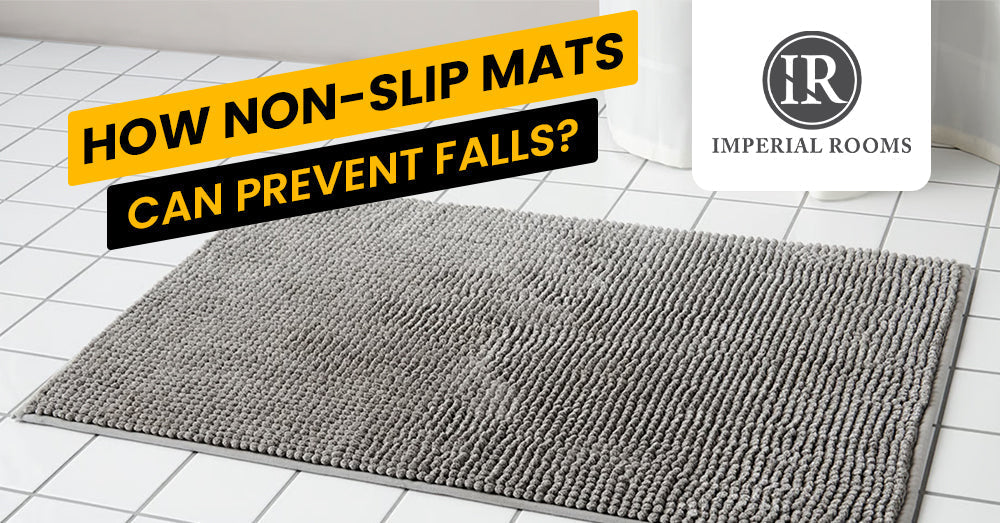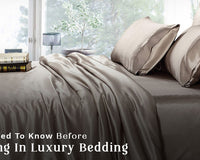Let’s be honest most people don’t think of their bathroom as a dangerous place. It’s small, clean, private, and usually the last place to expect an accident. But if you’re over 65 or have a loved one in that age group, the bathroom can be one of the most treacherous spaces in the home.
Think about it for a second. Slippery tiles, hot water, hard ceramic surfaces, tight corners, and poor lighting all combine to create the perfect storm for a slip or fall. Add in soap suds, wet floors, and stepping into or out of a bath, and suddenly, that serene space becomes an accident waiting to happen.
Many elderly individuals have less strength, slower reflexes, and reduced coordination, making it harder to catch themselves if they lose balance. A simple stumble can lead to life-altering injuries. What’s even worse? Many of these accidents go unreported because of embarrassment or the fear of losing independence.
We often take these risks for granted. But here’s the truth: with a few practical changes—like installing a non-slip mat—we can dramatically reduce the dangers.
The Shocking UK Statistics About Elderly Falls
Let’s talk numbers because they paint a very real picture.
In the UK, falls are the leading cause of injury-related hospital admissions among older adults. According to Public Health England, one in three people over 65 falls at least once a year. For those aged over 80, the number rises to almost one in two. Scary, right?
And where do many of these falls happen? That’s right—in the bathroom.
Wet floors and awkward movements, like stepping over a tub edge, are among the biggest culprits. A study from the NHS shows that a considerable percentage of falls among older people are directly linked to unsafe bathroom conditions, often because of water accumulation, slippery flooring, or a lack of non-slip accessories.
What makes it worse is the aftermath. A fall doesn’t just result in a physical injury. Many elderly individuals experience a psychological toll, becoming fearful of further accidents, leading them to reduce physical activity, which only increases fall risk further.
Factors That Increase Risk for Older Adults
Decreased Mobility and Balance
As we age, our bodies naturally become less agile. Muscles shrink, bones weaken, and reflexes slow down. Movements that were once second nature—like standing up, turning around, or stepping over an edge—suddenly become challenges.
Even a slight loss of balance can be dangerous for elderly people, especially in slippery environments like bathrooms. According to Age UK, reduced mobility is one of the most common risk factors for bathroom-related falls. This is particularly concerning for those dealing with arthritis, Parkinson’s, or recovering from surgery.
Without supportive surfaces or anti-slip aids, one wrong move can lead to a serious fall. Non-slip shower mats offer that much-needed grip underfoot, reducing the chance of sliding when shifting weight or taking a step after bathing.
Visual Impairments and Cognitive Challenges
Another significant factor is poor vision or cognitive decline. As people age, their eyesight naturally deteriorates, making it challenging to spot wet patches, small steps, or corners in the bathroom. Add in low lighting and shadows, and the bathroom becomes tricky to navigate.
People living with dementia or Alzheimer’s may also struggle to understand their environment clearly. They might misjudge depth, forget to dry the floor, or confuse the shower’s edge with a flat surface.
In such scenarios, a brightly coloured, textured non-slip mat doesn’t just prevent slipping—it can also act as a visual cue, helping seniors better identify safe zones in their bathrooms.
Wet and Slippery Surfaces
It’s no surprise that wet surfaces are one of the biggest dangers in any bathroom. What seems like a minor water splash to a young person can become a serious fall hazard to someone with limited mobility.
The bathroom floor can become as slick as ice, whether it’s condensation, spilt bath water, or soap residue. Each step becomes risky without something underfoot to increase friction, like a high-grip mat.
Tiles and smooth vinyl flooring only make things worse. They don’t absorb moisture and provide no natural traction. With the right non-slip mat placed in high-traffic areas, the difference in safety is instantly noticeable.
Common Injuries Caused by Bathroom Falls
Hip Fractures and Broken Bones
The impact is rarely soft if an older adult falls in the bathroom. The combination of hard surfaces and awkward landing angles means injuries are often severe. Hip fractures are one of the most common outcomes of bathroom falls, and unfortunately, they usually require hospitalisation, surgery, and long-term recovery.

According to the Royal College of Physicians, more than 70,000 hip fractures occur every year in the UK, and the majority of them are due to falls among older people. And let’s not forget—the cost to the NHS is in the billions annually, not to mention the emotional and physical cost to families.
Head Injuries and Concussions
Head injuries are another serious concern. Falling backwards or sideways onto a tiled surface can cause anything from a minor bump to a life-threatening concussion. In some cases, a fall results in hospitalisation in intensive care or can even be fatal.
What’s troubling is that many older individuals live alone. If they fall and hit their head in the bathroom without a personal alarm system, it might be hours before anyone finds them.
Preventing the fall in the first place—using tools like non-slip mats, grab bars, and proper lighting—is crucial in avoiding such outcomes.
Psychological Effects After a Fall
Focusing on physical injuries is easy, but let’s not ignore the mental impact. After a fall, many elderly individuals develop a deep fear of falling again. This leads to reduced physical activity, social withdrawal, and even depression.
This “fear cycle” creates more problems. Less movement leads to muscle loss and stiffness, which increases the likelihood of another fall. It becomes a cruel loop.
Installing a non-slip mat might seem small, but it provides security and peace of mind. Knowing there’s a reliable surface to stand on gives elderly individuals the confidence to carry out daily routines without worrying about slipping.
How Non-Slip Mats Reduce These Risks?
Not all mats are created equal. The best non slip shower mats for the elderly are designed with natural rubber or high-friction PVC, creating a firm grip even when wet. Many also feature suction cups underneath, which anchor them firmly to the floor, so they don’t shift even when you step on them.

The textured surface on top helps channel water away from the feet, increasing friction. Some high-end versions even include antimicrobial layers, which prevent mould build-up—a key concern in the UK’s damp bathrooms.
Areas Where Non-Slip Mats Should Be Placed
Non-slip mats only work if they’re used in the right places. Sounds simple, right? But it’s shocking how many people buy a mat, toss it randomly in the bathroom, and call it a day. Let’s fix that.
First and foremost, place a mat inside the shower or bath. That’s the high-risk zone where the floor gets slick, and movement is awkward. Whether you’re bending to grab shampoo or stepping out of the tub, traction is key here. The mat should sit flat and cover as much of the base as possible.
Next, don’t ignore the area just outside the bath or shower. You know that moment when you finish washing, step out with soaking-wet feet, and land on the cold tile? That’s a prime slip point. A thick, absorbent, bubble mat for bathtub here keeps things safe and dry.
Another overlooked spot is in front of the sink. Older adults spend several minutes here brushing their teeth, shaving, or doing skincare. Water often splashes during these routines, creating a sneaky puddle you might not notice until your foot finds it.
Lastly, a small anti-skid mat can offer added safety if the toilet area is a bit raised or positioned on slippery flooring.
Proper placement transforms a non-slip mat from a passive accessory into an active protector. Think of it like a seatbelt—you want it positioned correctly before things go wrong.
Choosing the Right Non-Slip Mat for Seniors in the UK
What Materials Work Best in British Bathrooms
Let’s face it—UK bathrooms tend to have cold, often damp climates. That’s why material choice matters. You want something that can handle moisture without turning into a mouldy sponge.

Natural rubber tops the list. It’s eco-friendly, naturally grippy, and resistant to mildew. It clings well to slick tiles and dries faster than soft foam mats.
Then there’s PVC (polyvinyl chloride), which is widely used for its toughness and water resistance. It’s cheaper than rubber and still offers solid grip and comfort. Just make sure it’s BPA-free if you’re placing it in a high-contact area.
Avoid thin foam mats or fluffy bathroom rugs that claim to be “non-slip.” They soak up water, slide too easily, and can be dangerous.
You should also look for mats that are textured. Raised dots, ribbed surfaces, and waffle patterns give your feet extra traction. Some even come with built-in drainage holes to prevent water from pooling under your feet.
Lastly, if possible, go for anti-mould or antibacterial coatings. They’re great for bathrooms that don’t dry out quickly, especially helpful in homes without extractor fans or with poor ventilation.
Size, Design, and Placement Tips
Picking a mat isn’t just about what it’s made of. It’s also about size, shape, and where you will put it.
For showers, you want a rectangular mat that covers the base. Make sure it fits snugly without curling up at the edges—it must lie flat for those suction cups to grip.
For bathtubs, go long and narrow. Some mats are designed to extend from the head to the foot of the tub, giving you grip no matter where you stand or sit.
Outside the shower or bath, choose a plush, non-slip backed mat. Look for ones with a rubber bottom and water-absorbent top. This helps keep floors dry and feet warm post-shower.
Design-wise, choose lighter colours like grey, cream, or blue. These match typical UK bathroom tones and are easier to spot on low-light mornings. Avoid mats with overly dark colours or busy patterns—they might hide dirt or puddles.
Remember: a mat is only helpful if it’s placed well. Make sure it’s flat, thoroughly suctioned (test it before first use), and kept clean to avoid soap scum buildup.
Conclusion
Let’s bring it home. Bathrooms are one of the most accident-prone spaces for elderly individuals in the UK, and every day without action increases the risk. But you don’t need to rip out your tub or call in a builder to make a real difference.
They’re cheap, easy to install, and proven to dramatically reduce falls. Whether you’re shopping for yourself, your parents, or a loved one in care, they’re one of the best investments you can make in home safety.
FAQs
1. Are non-slip mats essential if my bathroom has tiles with grip?
Yes. Even “textured” tiles become slippery when wet with soap or shampoo. A non-slip mat adds an extra layer of safety you can rely on, especially in showers and tubs.
2. How often should I clean my non-slip bath mat?
At least once a week, rinse it thoroughly with warm, soapy water and allow it to air dry fully. This helps prevent mould and keeps the suction working properly.
3. What’s the best material for humid UK bathrooms?
Natural rubber or high-quality PVC with antibacterial treatment works best. They resist mildew, offer excellent grip, and are easier to maintain.
4. Can I use a regular fluffy bathroom rug instead of a non-slip mat?
No. Fluffy rugs are not designed for wet areas. They often slide on tiles and can trap moisture, making them a slipping hazard and a mould risk.
5. Is a non-slip mat enough to protect older adults in the bathroom?
It’s a great first step, but depending on the person’s mobility, it should be paired with grab rails, good lighting, and possibly a shower chair or fall alarm.


